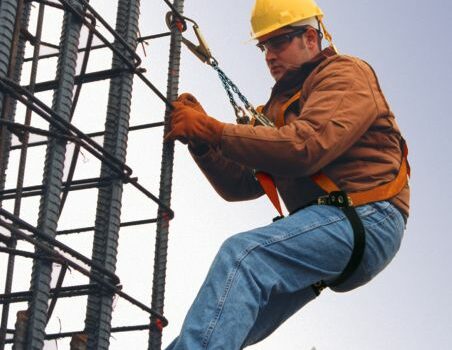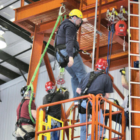Renew Your Forklift License in Mississauga
If you work in the industrial or construction sector in Mississauga, you know how important it is to have a valid forklift license. Forklifts are powerful machines that require skillful operation, and a license ensures that operators are properly trained to handle these vehicles safely and efficiently. Just like any other license, forklift licenses have an expiration date, and it’s essential to renew them in a timely manner to comply with regulations and maintain your job prospects. In this article, we will explore the process of renewing your forklift license in Mississauga and the importance of staying up to date with your training.
Why Renew Your Forklift License?
Before we delve into the renewal process, let’s first understand why it is crucial to have a valid forklift license. Forklifts are powerful machines that can cause significant damage if not operated correctly. By obtaining a forklift license, you demonstrate your competence in operating the equipment, following safety protocols, and minimizing risks in the workplace.
Here are a few reasons why renewing your forklift training license is important:
- Legal Compliance: Operating a forklift without a valid license is against the law. By renewing your license on time, you ensure that you are complying with the regulations set by the Ministry of Labour and other governing bodies.
- Safety: Forklift accidents can lead to serious injuries or even fatalities. By renewing your license, you stay up to date with the latest safety practices and regulations, reducing the risk of accidents and creating a safer work environment for yourself and others.
- Job Opportunities: Many employers require forklift operators to have a valid license. By keeping your license current, you increase your chances of finding employment or advancing in your current job.
Renewing Your Forklift License in Mississauga
Renewing your forklift license in Mississauga is a relatively straightforward process. Here are the steps you need to follow:
- Training Refresher: The first step in renewing your forklift license is to complete a training refresher course. This course will ensure that you are aware of any updates in forklift operation techniques and safety protocols. It is essential to choose a reputable training provider that offers courses specifically designed for license renewal.
- Written Test: After completing the training refresher, you will need to pass a written test. The test evaluates your knowledge of forklift operation, safety guidelines, and regulations. It is essential to study the course material thoroughly to ensure success on the test.
- Practical Evaluation: Once you have passed the written test, you will need to undergo a practical evaluation. This evaluation assesses your ability to operate a forklift safely and efficiently. It is crucial to demonstrate your skills and follow all safety protocols during the evaluation.
- License Renewal: Upon successful completion of the written test and practical evaluation, you can proceed with the license renewal process. You will need to submit the necessary paperwork, including the renewal application and fee, to the appropriate licensing authority in Mississauga.
- Continuing Education: Even after renewing your license, it is important to continue your education and stay updated on the latest industry practices and safety guidelines. Attending regular training sessions and workshops will help you enhance your skills and maintain a high level of competence.
Choose the Right Forklift Training Provider
When it comes to renewing your forklift license in Mississauga, it is crucial to choose the right training provider. Look for a reputable organization that offers comprehensive training programs specifically designed for license renewal. Consider factors such as the provider’s experience, course curriculum, and instructor qualifications. A well-structured and up-to-date training program will ensure that you receive the knowledge and skills necessary to renew your license successfully.
Continuing education and staying informed about the latest developments in forklift operation and safety is essential even after renewing your license. It is a responsibility that should not be taken lightly. By actively seeking opportunities for professional development, such as attending seminars, workshops, or online courses, you can expand your knowledge and skills in forklift operation.
Additionally, it is important to prioritize safety in your daily work routine. Always follow the established safety protocols, wear appropriate personal protective equipment, and conduct regular maintenance checks on the forklift equipment. Being proactive about safety not only protects yourself but also promotes a culture of safety within your workplace.
Remember, a forklift license is not just a piece of paper but a testament to your competence and dedication to safe forklift operation. By renewing your license and investing in ongoing training, you demonstrate your commitment to upholding high standards of safety and professionalism in the workplace.
So, if your forklift license in Mississauga is nearing its expiration date, don’t delay. Take the necessary steps to renew your license, stay updated on industry best practices, and continue prioritizing safety in your daily work routine. By doing so, you contribute to a safer work environment and enhance your career prospects as a skilled forklift operator.
Conclusion
Renewing your forklift license is an important responsibility for any forklift operator in Mississauga. It ensures legal compliance, enhances workplace safety, and improves job prospects. By following the renewal process, completing the necessary training, and staying updated on industry best practices, you can continue operating forklifts safely and efficiently. Remember, choosing the right training provider is crucial for a successful license renewal. So, invest in your professional growth and maintain your forklift license without delay.








